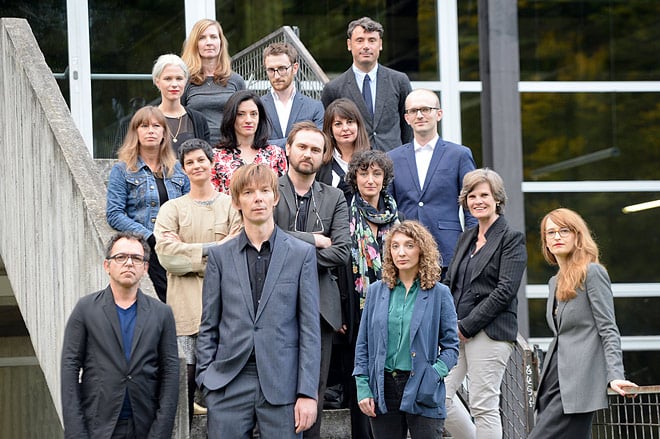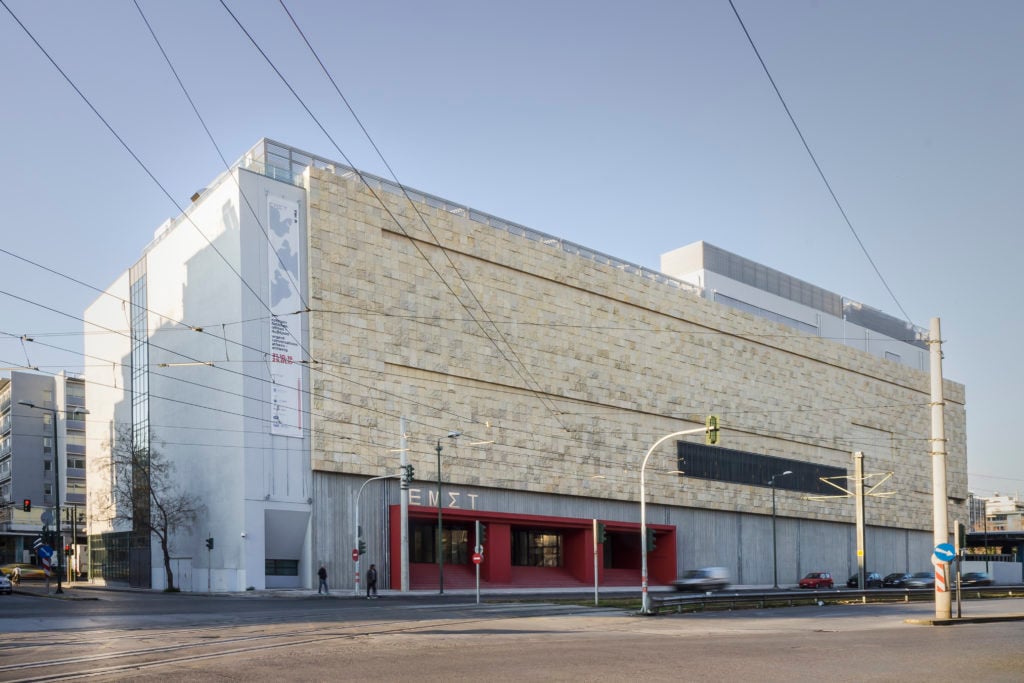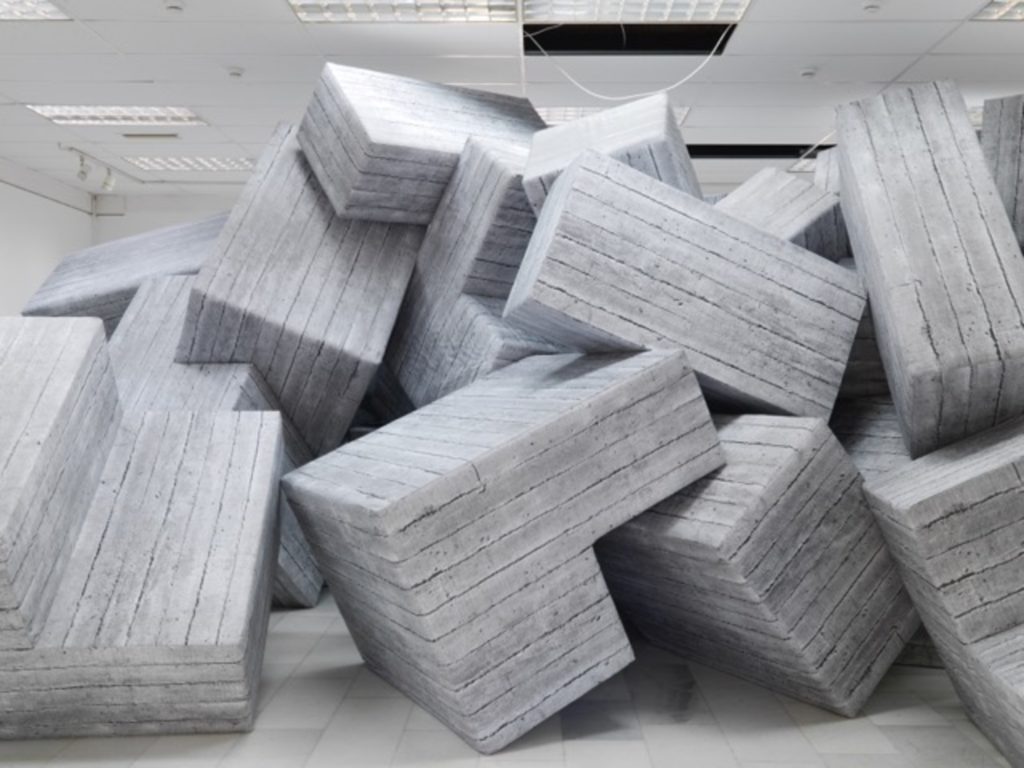Art World
Here’s Why Greece Is Not Exactly Rolling Out the Red Carpet for documenta 14
The organizers of "Learning from Athens" are facing some serious questions.

The organizers of "Learning from Athens" are facing some serious questions.

Cathryn Drake

Adam Szymczyk’s proposition to divide documenta 14 between the cities of Kassel and Athens was brilliant: after all, Greece and Germany represent the two sides of the coin—metaphorically, economically, and even culturally—in the European Union’s current rift, and have had an intimate, if turbulent, long-term relationship, from the reign of King Otto to the Nazi Occupation of Greece and the present crisis.
Called “Learning from Athens,” the exhibition’s stated intention is to recalibrate the European perspective from the vantage point of Greece, or the “South.” However, the Greeks did not exactly roll out the red carpet for members of the documenta team, who from the start were accused of exploiting and exoticizing, rather than engaging the emblematic context.
That the documenta 14 team walked into a political minefield when they arrived in Athens to set up camp was no surprise. Prime Minister Alexis Tsipras is viewed as a traitor whose disregard for the referendum vote in 2015—a resounding “No”—has paved the way for Greece to become a de facto German colony. The Syriza-led government accepted an even more restrictive bailout package than the one rejected, increasing pension cuts and taxes, as well as privatizations allowing assets to be sold off at bargain prices, with virtually everything up for grabs except the Parthenon.

The National Museum of Contemporary Art in Athens. Photo by Stephie Grape, courtesy the museum.
After philosopher Paul B. Preciado launched its first series of public programs last September, titled “Parliament of Bodies: 34 Exercises of Freedom,” the Greek press criticized documenta 14 for promoting the very neoliberalism its intellectual agenda proposed to disrupt. The forums—including lectures by philosophers and academics, performances by indigenous artists, and a “Torture and Freedom Tour of Athens”—are being hosted in the former headquarters of the military junta’s special police, now called Parko Eleftherias (Freedom Park), next to its detention and interrogation center, a site of horrific torture that is now a museum.
“The problem is not with the program itself: it is who does it and where,” Nayia Yiakoumaki, co-director of the Athens Biennale, explained. “All of us know people who had firsthand experience of the junta.”
Shortly after the first series of public programs concluded, the death of the last surviving junta leader, Stylianos Pattakos, was announced.
Art and politics collided further when President Obama arrived in Athens—uncannily, the day before November 17, the anniversary of the student uprising in 1973, and the annual anarchist march on the US embassy in protest of the CIA-backed junta. So the protests started a day early, turning violent just outside of documenta’s education workshop, next to the now-closed gate destroyed by military tanks that historic day, on the graffiti-covered campus of the Polytechnic school.
“This is hallowed ground,” says Stephanie Bailey, an art critic who lived in Athens for several years until 2012. “You don’t fuck around with November 17; it’s where the terrorist organization was born.”
Just before the commemoration of Oxi day, marking Greece’s involuntary entry into the Second World War after refusing Mussolini on October 28, 1940, documenta’s public program had hosted “A Discussion on Democracy and War,” centered around Shadow World, a film on the global arms trade by Andrew Feinstein and Johan Grimonprez, and kicked off meetings of the “Society of the Indigenous.” In late November, there was a three-day seminar on “Wars and Capital,” led by scholars Éric Alliez and Maurizio Lazzarato, followed by theorist Franco “Bifo” Berardi’s series of lectures on “The Destruction of Europe” in mid-December.
In between, the anniversary of the police shooting of 15-year-old Alexandros Grigoropoulos brought more riots outside the Polytechnic school gates, after Greek police had confiscated a stash of 150 petrol bombs in the nearby Exarcheia neighborhood.
“It all started in 2008 with the riots after Grigoropoulos was killed, foreshadowing the crisis that would be announced a few months later,” Bailey adds. “The battle between neoliberalism and the counterrevolutionary movement is what Exarcheia stands for.”
A week later, the Greek public television station ERT aired documentaries about the German massacre at Kalavryta on December 13, 1943, followed by the start of documenta’s weekly broadcast of films, called “Keimena” (Texts). Curated by Hila Peleg and Vassily Bourikas, many of them focused on human rights issues around the world.
“I don’t remember an art event that has ever caused so much polemical debate,” journalist Fotini Barka says of documenta 14.
The international research study “Learning from documenta” has been focusing, among other things, on the future—particularly the impact the exhibition will leave behind in its wake. Initiated in June 2016 by anthropologists Elpida Rikou and Eleana Yalouri, the group has organized a series of panel discussions engaging curators from documenta and other experts involved in the cultural scene.

Andreas Angelidakis, installation view of 68 blocks of ruins. Courtesy of documenta 14.
“We would like to understand better what documenta’s arrival in Athens means, why in Athens and why now, and how are they going to go about it,” Yalouri explains. “A lot has been written about the notion of learning and how knowledge is engaged with other forms of power.”
American artist Rick Lowe, for one, intends to continue his collaborative Victoria Square Project for another year. “Of all of the European capitals I have visited, Athens feels the most human and kind,” he says.
The storefront space was intended as a cultural program for immigrants residing around Victoria Square—previously an informal camp for thousands of arrivals—but evolved into a forum engaging local Greek residents toward the goal of neighborhood integration as Lowe came to understand the issues they faced.
Foreign artists have been arriving in town one by one, and striking up collaborations with local craftspeople and institutions, producing a valuable undercurrent of exchange.
Sámi artist Joar Nango has been working in a scrapyard next to the Eleonas refugee camp, near a former Romany encampment and flea market that was recently cleared out by the city, where the proprietor has given him studio space and access to materials.
Recently Annie Vigier and Franck Apertet staged the theater performance “Avis d’audition,” actually a real audition for performers to appear at the National Museum of Contemporary Art (EMST) during documenta 14, part of a project curated by Pierre Bal-Blanc. Ghanian artist Ibrahim Mahama has recruited local collaborators to stitch together jute sacks covering Syntagma Square, opposite the Greek Parliament, for the three-session performance as part of “Check Point Prosfygika. 1934–2034. 2016–2017.”
“There are many levels that you can influence a city, first of all the people you employ,” says Elina Kountouri, director of the nonprofit NEON, which funds much of the current arts activity in Greece.
“If they give work and know-how to young people, that alone is a good thing,” she adds.
Still, the most crucial challenge documenta 14 faces in Greece is the contradiction inherent to the corporate and governmental funding of political art: coming into an economically-crippled country brandishing exceptional financial resources quite simply perpetuates the dynamics of colonialism.
“We are no longer in the position of seeing the arts as this enlightened or autonomous sphere. Culture has become part of the economic sphere, which is clear with documenta,” Paul B. Preciado explained at a panel on the politics of curating. “We think of the museum as a space of freedom, but in reality it is not.”
Yet the strangest thing of all is that, apart from the art world, most Athenians do not even know that the gigantic exhibition will soon take over a majority of the city’s cultural institutions.
“If I had known about the public programs it would have been great for my students to attend,” says Yannis Stefanou, a philosophy professor at the University of Athens.
If Athens can be seen as an open-air laboratory, the organization of documenta 14—entailing projects by more than 160 artists in two different countries and permits from the Byzantine Greek bureaucracy to use archaeological sites and other public spaces—may also itself be seen as a performance.
Greek dancer Kostas Tsioukas, who teaches at the Isadora Duncan Dance Center of Athens, will lead a posse of dancers in an improvised performance among the visitors of the Archaeological Museum of Piraeus throughout the duration of documenta 14, in “Collective Exhibition for a Single Body”—demonstrating a way to exercise the freedom we have been forced to forget.
“Learning in Athens is a daily practice,” explains documenta education coordinator Arnisa Zeqo, who has been collaborating with professors on seminars and workshops for art students.
“In this case it would be to walk inside, walk through rather than walk around; walking through the streets of Athens, through matter and through the unpredictability of art,” she adds.
And that is the beauty of life, art, and documenta 14. If only politics would follow suit.